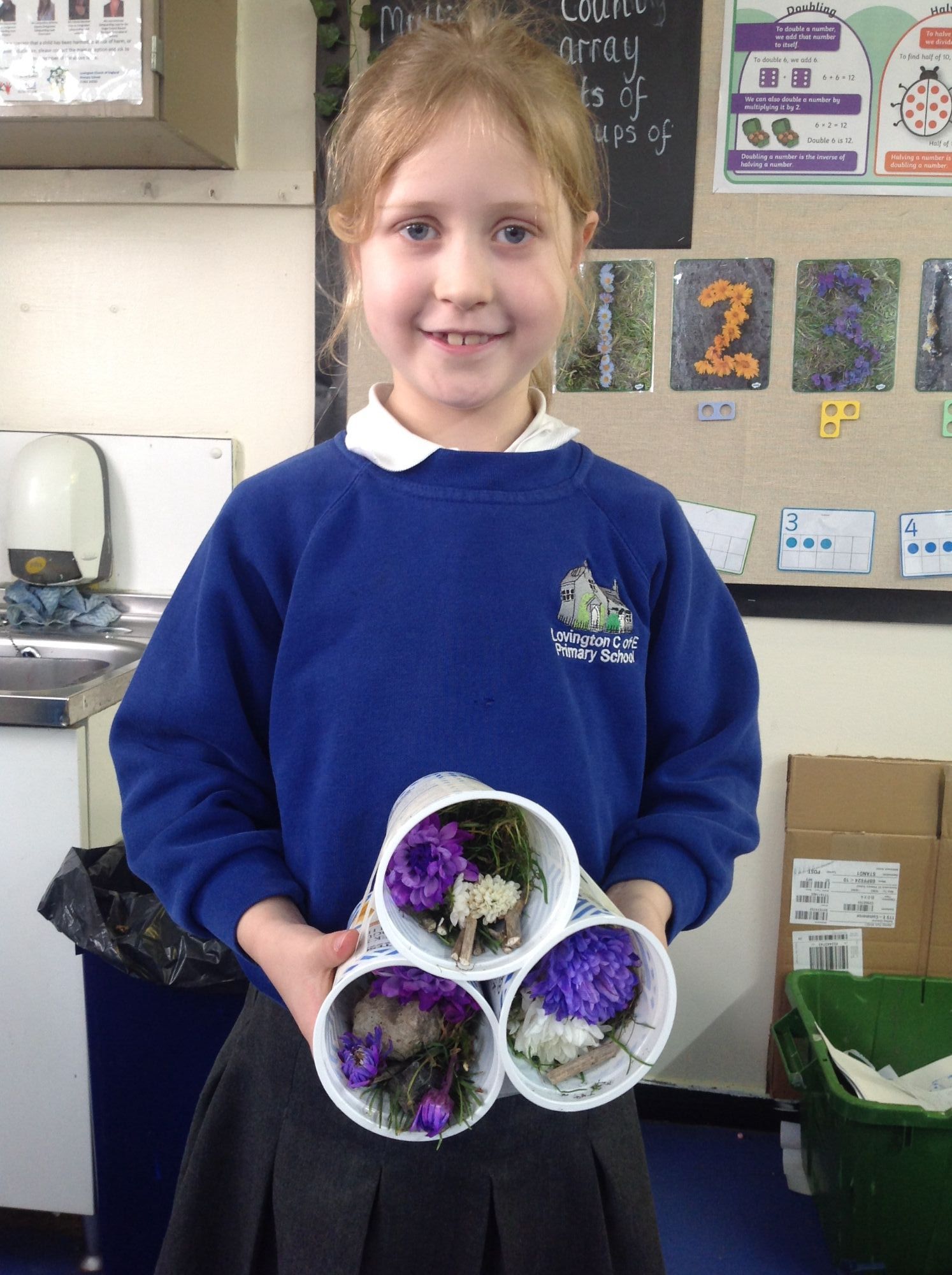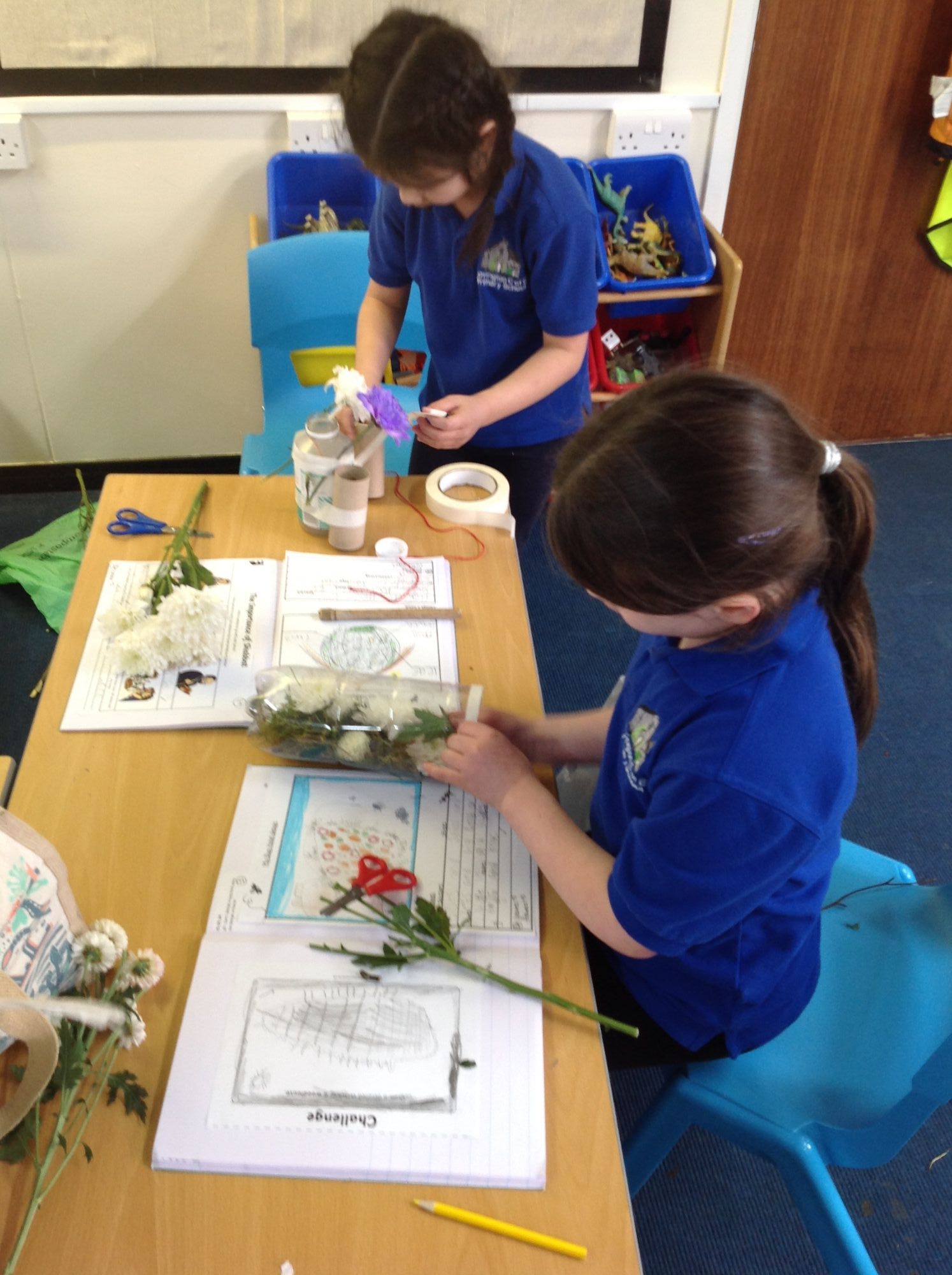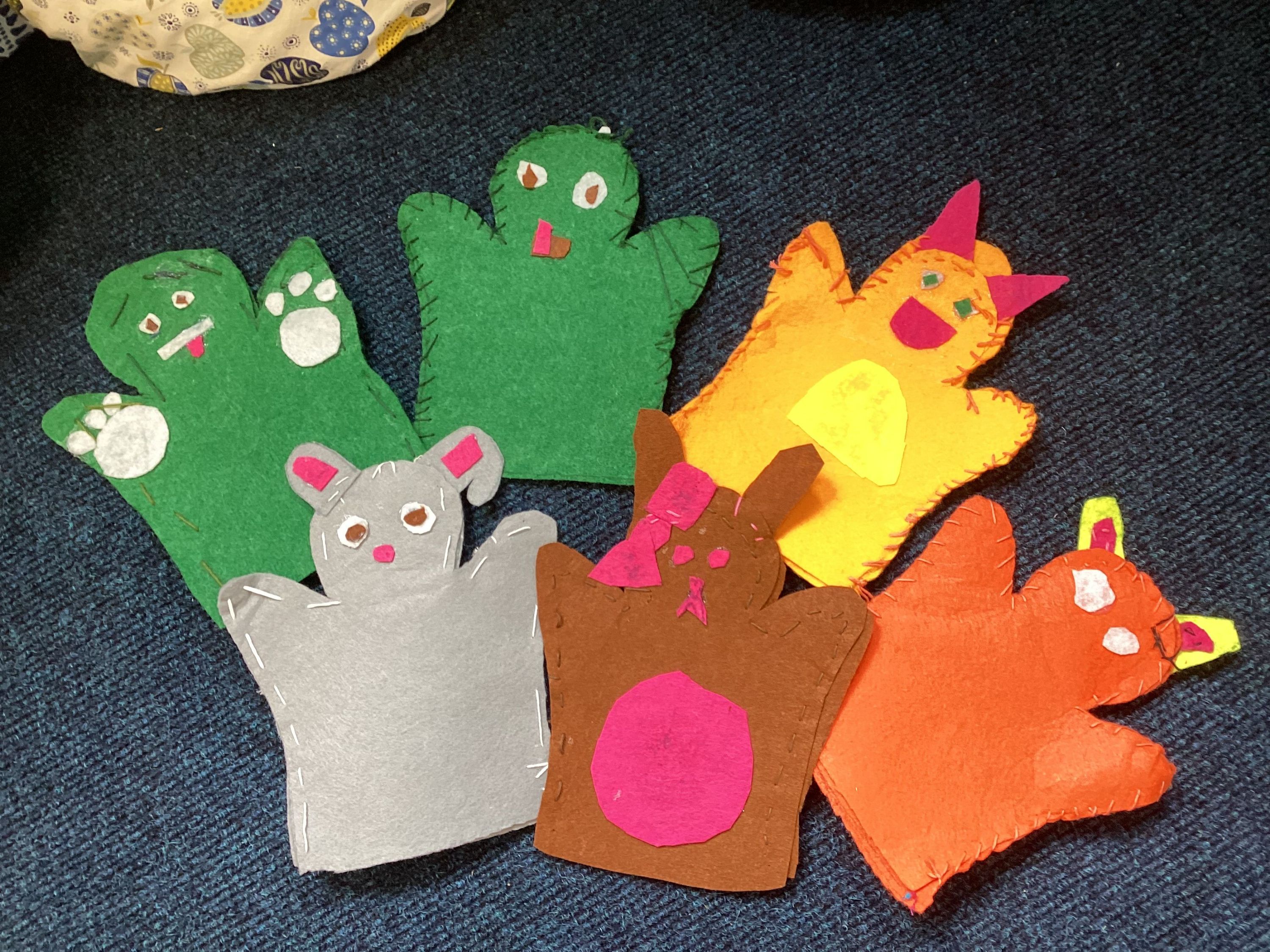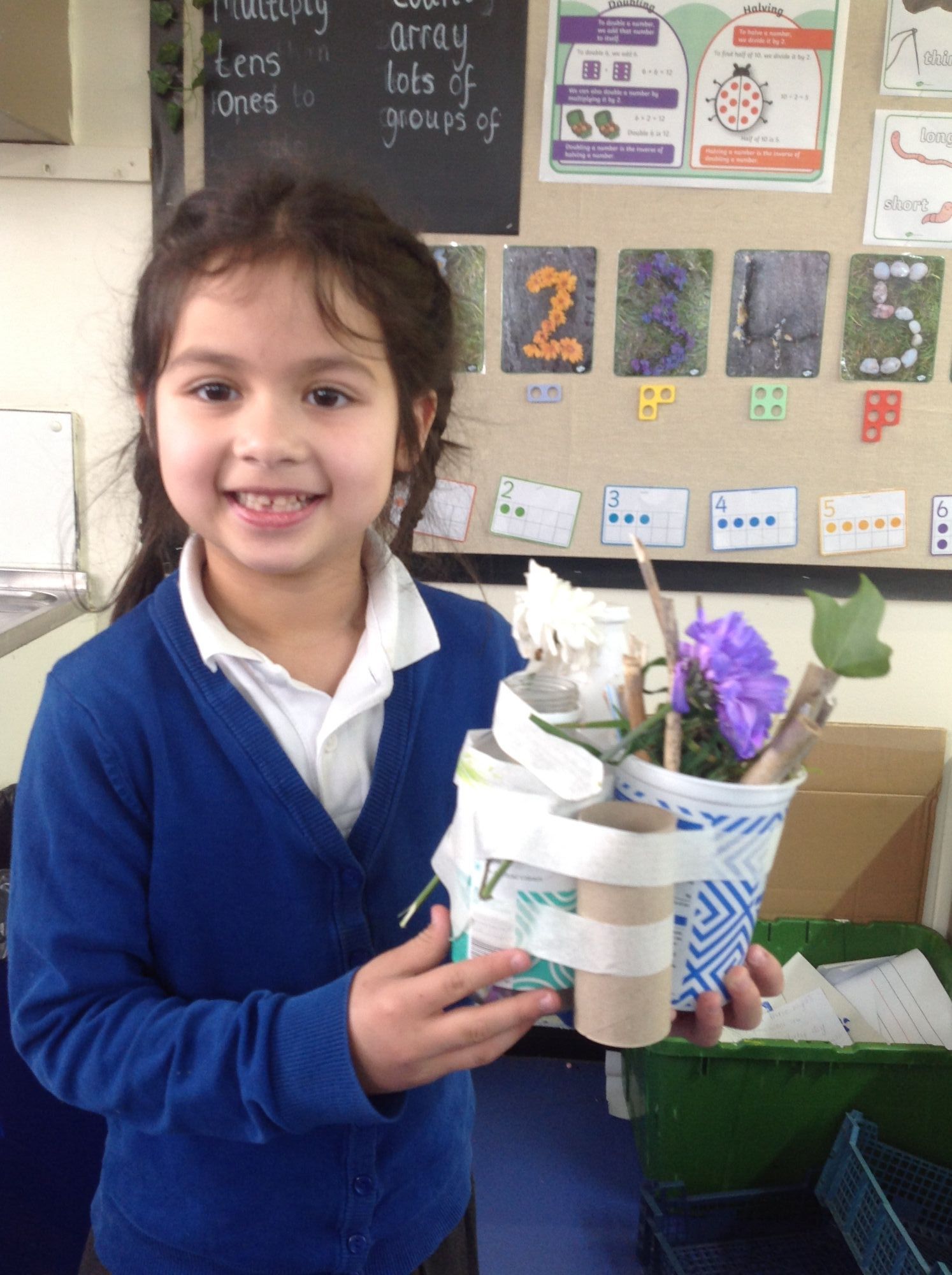Design and Technology
Intent
At Lovington Primary School, our Design Technology curriculum develops children's learning and results in the acquisition of knowledge and skills. Children will know more, remember more and understand more after experiencing practical tasks.
At Lovington, Design and Technology should be fully inclusive for every child. Our aims are to:
- Fulfil the requirements of the National Curriculum for Design and Technology.
- Provide a broad and balanced curriculum.
- Ensure the progressive development of knowledge and skills.
- Learn how to take risks
- Become resourceful, innovative, enterprising and capable citizens through evaluation of past and present design and technology.
- Develop a critical understanding of its impact on daily life and the wider world.
- Participate successfully in an increasingly technological world, using the language of Design and Technology.


Pippin Class - Designing and Building Bug Hotels
February 2024
Our Children Will:
- Be intrinsically motivated – they are eager to build on their existing skills and understanding.
- Be willing to practise skills across a range of different activities and situations: alone and in small groups to meet desired design outcomes.
- Ask inquisitive questions, pose ideas and eagerly tackle tricky problems throughout the designing, making and evaluating process.
- Be resilient to mistakes and persevere when faced with a challenge; they are unflinching when tackling problems faced in any step of their projects.
- Achieve standards in DT that surpass the national expectations at each key developmental phase.
- Possess highly positive attitudes towards Design Technology and will be aspirational in their personal goals.
Our Teachers Will:
- Provide a progressive and challenging curriculum which is sequenced to enable all children to develop the competence to excel within each area of design technology.
- Provide our children with a rich curriculum of carefully crafted lessons that ensures time for designing, making and evaluating.
- Provide opportunities for our children to develop ideas, test theories, think logically and structure their work systematically.
- Encourage our children to employ imagination and creativity in all stages of their projects.
- Ensure an equal variety of the design technology strands are taught – technical, textiles and cooking/nutrition.
- Encourage and promote opportunities for children to take their design technology skills into real life situations and contexts beyond the classroom.
- Create a safe and open environment where children feel confident to experiment, make mistakes and revise designs.
Implementation
To ensure high standards of teaching and learning in Design and Technology, we implement a curriculum that is progressive throughout the whole school. Design and Technology is taught, focusing on knowledge and skills stated in the National Curriculum. We work hard to ensure that it is given the same importance as the core subjects, as we feel this is so important in our rapidly changing world and enables all our children to gain ‘real-life’ experiences.
The Design and Technology curriculum at Lovington is based upon the 2014 Primary National Curriculum in England, which provides a broad framework and outlines the knowledge and skills taught in each Key Stage. Teachers plan lessons for their class using our progression of knowledge and skills documents. Teachers are aware of our children’s cultural capital, and we ensure the opportunities in Design & Technology allow children to develop key life skills within cooking & nutrition. The progression document ensures that the curriculum is covered and the skills and knowledge are taught progressively from year to year.
When teaching Design and Technology, a variety of teaching approaches are used based on the teacher’s judgement. The children’s work is displayed in corridors after learning experiences or families may be invited in to share the learning outcome.
We provide a variety of opportunities for Design and Technology learning, to take place both inside and outside the classroom.
Educational visits are another opportunity for teachers to plan for additional opportunities both inside or outside the classroom. We have many visitors coming into school including local bakers and the Royal Navy STEM team.
The Learning Journey
Through a variety of innovative and practical activities, we teach the subject-specific knowledge, understanding and skills required for pupils to engage in the process of designing, making and evaluating. Our pupils design and make products that consider purpose, function, suitability and appeal in relation to a variety of contexts. This process is enhanced by the teaching of design technology within topic, as it allows our pupils to place their learning into real life situations allowing for stronger and deeper connections with their objectives.
When undertaking the design, make and evaluate model, our children are taught to:
Design:
•Use research and develop design criteria to inform the design of innovative, functional, appealing products that are fit for purpose, aimed at individuals or groups.
• Generate, develop, model and communicate their ideas through discussion, annotated sketches, cross-sectional diagrams, prototypes, pattern pieces and computer-aided design. Furthermore, they collect and use various sources of information to assist them in communicating ideas, costing products and thinking about sustainability and innovation.
“Design can help to improve our lives in the present. Design thinking can help us chart a path into the future.”
- Tim Brown
Make:
• Select from and use a wider range of tools and equipment to perform practical tasks (for example, cutting, shaping, joining and finishing, as well as chopping and slicing) accurately. In doing so, they work form their own detailed plans, checking their product as it develops and then undertake any necessary modifications.
• Select from and use a wider range of materials, ingredients and components, including construction materials, textiles and ingredients, according to their functional properties, aesthetic qualities and, where appropriate, taste.
Evaluate:
• Investigate and analyse a range of existing products with specific focus on suitability.
• Evaluate their ideas and products (clearly stating what went well and what could be improved) against their own design criteria and consider the views of others to improve their work.
• Understand how key events in design and technology have helped shape the world.
Technical knowledge:
• Apply their understanding of how to strengthen, stiffen and reinforce more complex structures.
• Understand and use mechanical systems in their products.
• Understand and use electrical systems in their products.
• Apply their understanding of computing to program, monitor and control their products.
• Understand some of the ways that food can be processed and the effect of different cooking practices (including baking and frying)
• Explore different textiles and textures, initially through play but latterly whilst choosing fabrics for a purpose based on aesthetics and function.
• Sew, cut and tack fabric with precise measurements to create 3D pieces.
Our curriculum aims to take these skills outside of the classroom and apply them to a range of different contexts, such as:
- At home
- In the garden
- In the local community
- In the industry
- In the playground
- In the wider world and environment

Impact
Within Design and Technology, we strive to prepare children to take part in the development of tomorrow’s rapidly changing world. We aim to encourage children to become creative problem-solvers, both as individuals and as part of a team. Through this subject, children combine practical skills with an understanding of aesthetic, social and environmental issues, as well as functions and industrial practices. This allows them to reflect on and evaluate present and past design, its uses and its impact. Our curriculum is well thought through and is planned to demonstrate progression. We focus on the progression of knowledge and skills. Discreet vocabulary progression also forms part of our units of work.

Pippin Class - Designing and making glove puppets
May 2025
Assessment
We measure the impact of our curriculum through the following methods:
- Assessing children’s understanding of relevant vocabulary before and after the unit is taught, this is done through formal assessments as well as weekly quizzes.
- Reviewing the images and outcomes of the children’s practical lessons.
- Children’s own evaluations of products.
- Interviewing the pupils about their learning (pupil voice).

